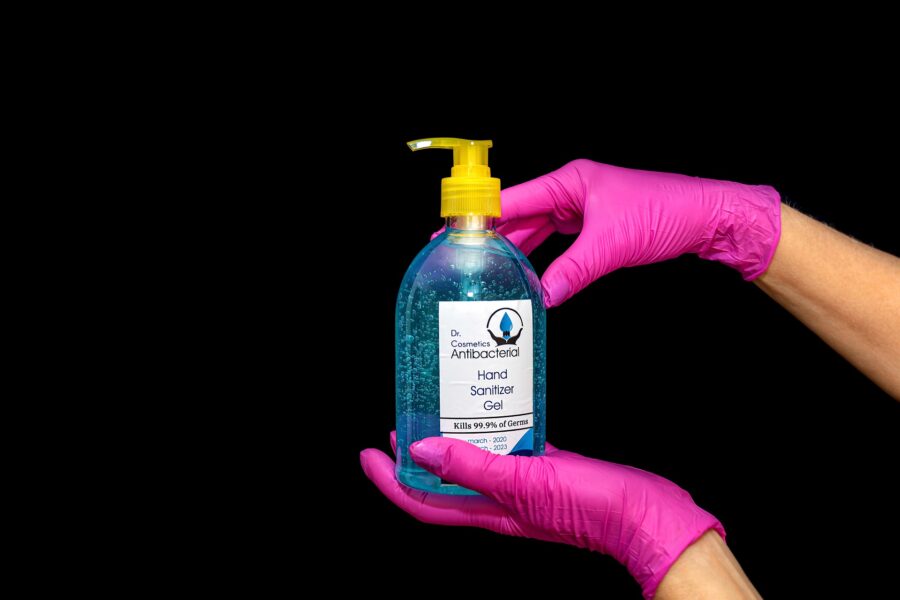By: Kelly Cawcutt, MD, MS, FACP, FIDSA; Sponsored by Clorox Healthcare
Infectious diseases remain a critical cause of morbidity, mortality and cost in all healthcare facilities including outpatient clinics, long-term care facilities and acute care facilities, such as hospitals. Infections can come from two main places – inside the hospital walls and from outside within a community. A patient can develop a community-acquired infection prior to arrival in any healthcare setting, which often is what prompted the patient to seek care. The most recent example of this is COVID-19 (SARS-CoV-2). This virus is impacting healthcare facilities around the world with increased patient burdens and human-to-human spread in which infected patients are transmitting the infection to other patients, visitors and healthcare workers.
There are also many healthcare-associated infections (HAIs) that patients in both acute and long-term care settings are at specific risk for based on multiple factors such as: having chronic medical problems that increase possible risks (such as requiring dialysis or conditions causing weakened immune systems), prior admission to healthcare facilities or receipt of antibiotics (placing patients at increased risk of acquisition of antibiotic-resistant (AR) infections or Clostridiodes difficle (C.diff) infection), the use of invasive devices (such as a ventilator in the setting of respiratory failure), and any procedures (such as surgery) needed for medical care. Lapses in infection control practices such as hand hygiene and cleaning and disinfection are another HAI risk factor. Going forward, we will specifically focus on HAIs in acute healthcare settings. This is the first post in a blog series originally published for Clorox Healthcare, in which we’ll be diving further into HAIs.
The primary reported infections under the umbrella of HAIs include central line associated bloodstream infections (CLABSI), catheter associated urinary tract infections (CAUTI), and surgical site infections (SSIs) and ventilator associated pneumonia (VAP), and C. diff gastroenteritis (actually the leading cause of HAI). These HAIs are reported and tracked nationally by the National Healthcare Safety Network (NHSN). However, it is important to note that these infections can be caused by both antibiotic-susceptible and AR pathogens. According to the CDC, each year in the U.S., there are over 2.8 million infectious causes by AR pathogens. This results in over 35,000 deaths. Microorganisms that are frequently also discussed in this category include C. diff infections and detection of AR bacteria, such as Carbapenem-resistant Enterobacteriaceae (CRE) or Methicillin-resistant Staphylococcus aureus (MRSA). Prevention of these infections is clearly of paramount importance and infection control practices such as adherence to guidance for hand hygiene, isolation practices, when to wear gloves and gowns and environmental cleaning, to prevent spread throughout the hospital. Additional infection control expert guidance is available through many organizations including the CDC, Society for Healthcare Epidemiology of America (SHEA) and the Association for Professionals in Infection Control and Epidemiology (APIC).
The toll that infections can have on patients, and healthcare facilities as a whole, can be daunting when you consider the needs for ongoing surveillance, diagnosis, management and complex infection prevention strategies. Strategies for the prevention of HAIs nearly all start with maintaining excellent hand hygiene, minimizing unnecessary invasive devices, prudent and correct use of antibiotics, employing appropriate precautions to prevent spread of infection within a facility and correct and thorough environmental and equipment cleaning and disinfecting to help eliminate pathogens. In many ways, the strategies are easier said than done; however, they are important to helping prevent the spread of the pathogens that cause infection, especially when you consider the substantial cost, they have on patient health and hospital cost.
Over the next posts, we will break down some of the key aspects of infectious diseases and prevention in the acute healthcare setting, including AR, HAIs, biofilms, multi-drug resistant organisms and challenges of infection prevention. Together, we can all strive to better understand and improve infection prevention thereby improving patient safety and care.
Full post originally at https://www.cloroxpro.com/blog/infections-know-no-bounds-the-reality-of-infections-in-healthcare-facilities/
